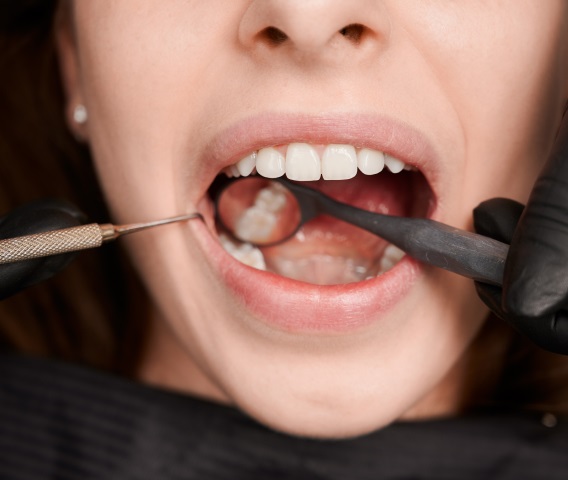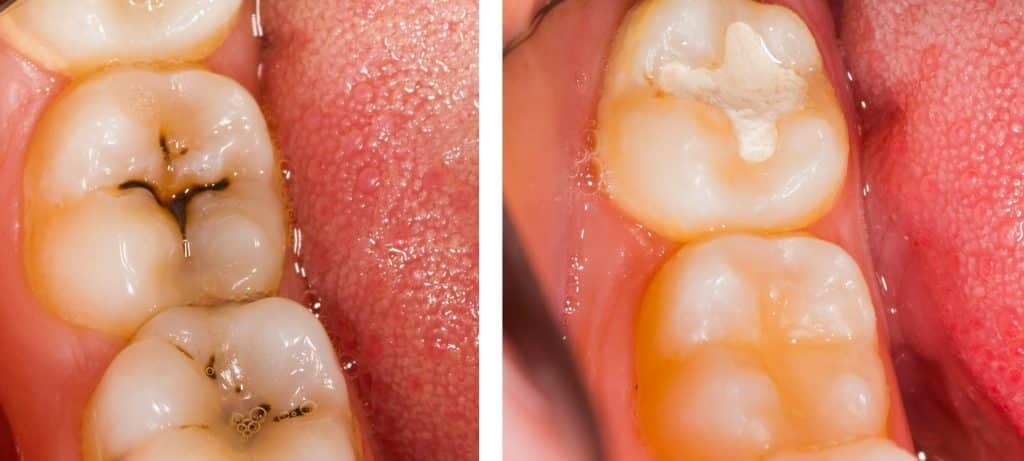Cosmetic Dentistry
Porcelain Fillings
Porcelain Fillings in
Scottsdale, AZ
Tooth-colored fillings have revolutionized dental care. Unlike traditional silver amalgam fillings, which contain mercury and are easily noticeable, tooth-colored fillings are made from either composite resin or dental porcelain. These materials blend seamlessly with your natural teeth, making them virtually invisible. Porcelain fillings, in particular, offer numerous benefits, prioritizing safety and aesthetics. Dr. Wiitala exclusively recommends porcelain fillings to our Scottsdale patients, eliminating concerns related to mercury content in traditional fillings.


What are porcelain fillings?
Porcelain fillings are actually made from dental-grade ceramic. Because they are made from pure ceramic, they have added strength and durability. Unlike composite resin fillings, where the resin is placed as liquid and then hardened, porcelain fillings are fully hardened when cemented directly to your tooth.
What are the benefits of porcelain fillings?
Patients wonder why Dr. Wiitala prefers to place porcelain white fillings whenever possible, rather than composite resin. Porcelain fillings have various advantages over composite resin and silver amalgam.
- Porcelain fillings have superior strength.
- Porcelain fillings wear at a similar rate to natural tooth enamel.
- Porcelain provides a more natural-looking repair, as dental ceramic closely resembles natural tooth enamel in the way it absorbs and reflects light.
- Porcelain fillings are highly resistant to staining, far more than composite resin.
- Placing a porcelain filling requires little removal of tooth structure compared to silver amalgam.
- Compared to composite resin, porcelain white fillings are the choice for larger fillings on molars, as they can withstand bite forces better.
- Porcelain fillings last at least twice as long, and often even longer, than composite resin fillings.
- Porcelain is smoother than composite resin in the tooth.
- Porcelain fillings cost three to four times more, but when compared with composite resin fillings that need to be replaced every four to five years, the difference in cost and coming in for appointments still comes out in favor of porcelain.
- Porcelain fillings have the same success rate as gold fillings, 93 percent after 15 years.
- Porcelain fillings don’t expand and contract, as silver amalgam does, so they cannot crack a tooth

Porcelain Fillings Before & After Images

Does getting a porcelain filling hurt?
Patients are fully numbed with a local anesthetic prior to the removal of any decay and placing the filling. You don’t feel a thing. There is little to no pain or soreness afterward, as well.
How long do porcelain white fillings last?
Along with the beauty of these fillings, Dr. Wiitala also loves their durability. As mentioned above, composite resin fillings can last from five to seven years. Studies have proven the contrasting durability of porcelain fillings.
At 15 years, the success rate of porcelain fillings is 93 percent.
Although there isn’t a good deal of data on longevity (due to their relatively recent addition for fillings), another study looked at the survival of porcelain fillings at 27 years. It found a survival rate of 88 percent at 27 years!
How do I maintain and care for my porcelain fillings?
You don’t need to use any special maintenance for porcelain fillings. Just normal twice-daily brushing with fluoride toothpaste and daily flossing. To get the best durability, it’s a good idea to not chew ice or the tips of pens. And you shouldn’t ever use your teeth to open the packaging.
Kind Words From Proud Patients
Great staff and Dr. Wiitala is very professional and personable
Dr Wiitala and his staff are the best – friendly, professional and knowledgeable. My family has been going to Dr Wiitala for a decade or more. It’s the best dental office ever.
Professional, excellent experience as always. Dental hygienist, Andrea thoroughly cleaned my teeth and Dr. Wiitala identified filling in need of repair before it would become a major problem down the road. This is reason I’ve been a client of Dr. Wiitala for 15+ years.
I had not been to the Dentist in quite awhile but broke a crown. Dr. Wiitala and his staff were tremendous! They were able to get me in quickly. At the appointment, everyone was friendly and professional. They communicated to me every step of the way and were able to perfectly correct my issue in a quick and painless manner! I would highly recommend Dr. Wiitala and his staff. They all were terrific!
Thank you again to Dr Wiitala and his great staff for their skilled dental care. I had my teeth cleaned by Lindsey who does a superb job, keeping my comfort in mind. I highly recommend this dental office for all your dental needs.
